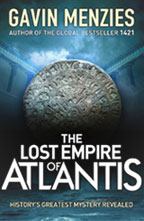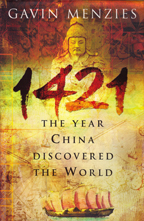DNA Evidence Campeche and Buctzotz Maya Peoples
1. Principal DNA Report relied upon
(a) Title: Polymorphic Alu insertions and the Asian Origin of Native American Populations.
(b) Authors: Gabriel E Novick and colleagues
2. Précis of the Report’s findings
Close similarity between the Chinese and native Americans suggests recent gene flow from Asia.
3. Corroboration or supporting DNA Reports
“Amerindian mitochondrial DNAs have rare Asian mutations at high frequencies.”
Investigated Maya, Ticuna (S America) and Pima (N America). Schurr T G andothers – see Bibliography.
4. Corroboration or supporting reports into ailments or diseases which suggest Chinese arrived by sea
(i) The astonishing finding by Novick et al that Maya DNA is closer to Chinese DNA than Maya DNA is to N, Central or S American DNA.
(ii) Hookworm and roundworm diseases endemic to S E Asia andChina.
5. Did the first Europeans to reach the area in which the Campeche and Buctzotz peoples live find Chinese already there?
Yes, Columbus (secret report).
6. Other evidence showing links with China
(a) Principal
(i) Gabriel Novick and colleagues’ findings (see 4 above).
(ii) Late Maya art at Chichen Itza and Copan is Chinese art.
(iii) The work of entomologist Julio Lopez-Maldonado, University of California Davis – He is proposing a new way to read the hieroglyphic Mayan writing system, proving that this is totally phonetic and astonishingly rich in literary terms. The relevance of the preliminary results points out that is totally contrary to what we have been previously told that the Mayan writing system was not but a child language or a telegraphic language as it is has been proposed by the Mayanist epigraphers in the last 160 years. Preliminary results actually suggest a strong connection culturally and linguistically with the Chinese writing system and culture.
(b) Secondary links with China
(i) Yucatan appears on world maps, viz. Cantino, Caverio, before Europeans got there.
(ii) Chinese people inMexico met by first Europeans – Coronado, Acosta, Galvão.
(iii) Jacutacato shroud showing foreign visitors on horseback and dogs.
(iv) Chinese figurines atTeotihuacan.
(v) Chinese body entombed,Teotihuacan.
(vi) Chinese chickens, roses, hibiscus, rice, ship dogs found by first Europeans.
(vii) Chinese lacquer technology used by Maya found by first Europeans.
(viii) Chinese jade medallions and earplugs.
(ix) Chinese statue (Teotihuacan), vase (Azacapotzaco), dyestuff technology used by Maya.
(x) Close physical similarity between Othomis Maya and Chinese.
(xi) Maya glyphs in temples interspersed with Chinese and Phaspa (Eunuch secret language).
7. Evidence in Synopsis of Evidence on website www.gavinmenzies.net.
Paras 2, 3, 4, 6, 7, 8, 9, 10, 11, 14, 15, 16, 17, 18, 19, 20; Annex XIX.
8. Reference in 1421 The Year China Discovered America
Chapters 9 and 19, pages 197-236.


